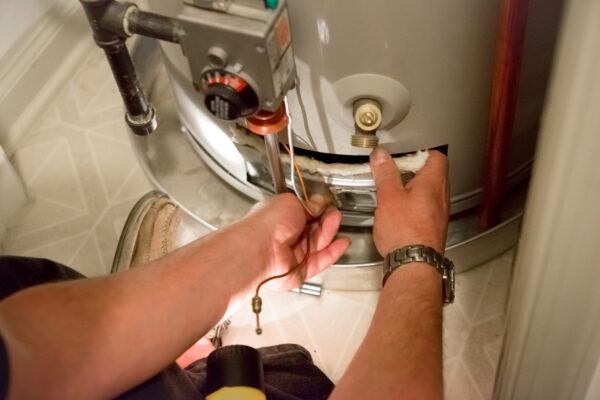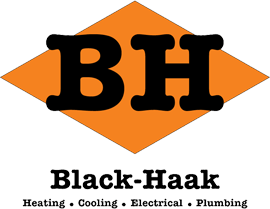
Hot water heaters play a crucial role in our daily lives, providing us with the comfort of warm water for various household tasks. One aspect that homeowners often consider is proper ventilation for their hot water heaters. Traditionally, chimneys have been the go-to method for venting combustion byproducts from gas-fired water heaters. However, advancements in technology and building codes have introduced alternative venting options that provide more flexibility and efficiency. In this blog post, we’ll explore the question: Can I vent a hot water heater without a chimney? We’ll delve into modern venting solutions, their benefits, and considerations for homeowners.
The Traditional Chimney Venting System
For many years, the chimney has been the primary means of venting combustion byproducts from gas-fired water heaters. The system relies on natural draft, where warm air rises through the chimney, creating a pressure difference that pulls exhaust gases from the combustion process out of the house. While chimney venting has proven effective, it has its limitations and drawbacks.
- Installation constraints: Not all houses are equipped with chimneys, and retrofitting a chimney can be costly and logistically challenging.
- Energy inefficiency: Chimney venting relies on the principle of natural draft, which can lead to energy inefficiencies as warm air is lost through the chimney.
- Space limitations: Chimneys require a certain amount of space within the home’s structure, limiting design and layout possibilities.
- Maintenance requirements: Regular maintenance, such as cleaning and inspections, is necessary to ensure proper chimney function and safety.
Modern Venting Solutions
As technology has evolved, so have the venting options for hot water heaters. Homeowners now have access to modern venting solutions that offer improved efficiency, flexibility, and safety. Here are some alternatives to chimney venting.
- Direct venting: Direct venting systems are designed to draw combustion air from the outside and expel exhaust gases directly to the outdoors. This eliminates the need for a chimney and minimizes the risk of backdraft or carbon monoxide buildup. Direct venting is particularly useful in tightly sealed homes, as it maintains indoor air quality.
- Power venting: Power venting utilizes a fan or blower to assist in expelling exhaust gases outdoors. This method is ideal for houses without a chimney or when the water heater is located in a basement or other enclosed space. Power venting provides greater flexibility in installation location and allows for longer vent runs.
- Vent-free water heaters: Vent-free water heaters are designed to operate without a traditional venting system. Instead, they use advanced combustion technology to produce minimal emissions, making them suitable for indoor use without venting to the outside. However, vent-free systems have their own set of safety considerations and may not be allowed in all jurisdictions.
Benefits of Modern Venting Solutions
- Energy efficiency: Modern venting systems, such as direct venting and power venting, are more energy-efficient compared to traditional chimney venting. They help reduce heat loss and improve overall water heater efficiency.
- Flexible installation: With modern venting options, homeowners have greater flexibility in choosing the location of their water heaters. This is especially beneficial for homes without chimneys or for those looking to optimize space usage.
- Improved safety: Direct venting and power venting systems enhance safety by minimizing the risk of carbon monoxide exposure and backdrafts, which can occur with chimney venting.
- Compliance with codes: Building codes and regulations evolve over time, and modern venting solutions are often designed to meet current safety and environmental standards.
Considerations for Homeowners
Before choosing a venting solution for your hot water heater, there are several important considerations to keep in mind.
- Local codes and regulations: Check with your local building department to understand the specific codes and regulations that apply to venting systems in your area. These regulations are put in place for the safety of both residents and neighbors.
- Venting distance and location: Consider the distance between your water heater and the vent termination point outdoors. Some venting options allow for longer vent runs than others, which can influence where you install your water heater.
- Home layout and design: Evaluate your house’s layout and available space to determine the most suitable venting option. Modern venting solutions can offer more design flexibility compared to traditional chimneys.
- Professional installation: Regardless of the venting option you choose, it’s crucial to have the system professionally installed by a qualified technician.
Maintenance and Care: Ensuring Longevity and Safety
While modern venting solutions offer numerous benefits, proper maintenance and care remain essential to ensure the longevity and safety of your hot water heater and its venting system. Regular upkeep helps prevent issues that could compromise performance, efficiency, and, most importantly, your family’s safety.
Regular Inspections
Just as you would schedule routine maintenance for your car, your hot water heater’s venting system requires periodic inspections. Schedule professional inspections at least once a year to ensure that the venting components are free from blockages, corrosion, or damage. Any obstruction in the venting pathway can lead to inadequate ventilation, which can increase the risk of carbon monoxide buildup.
Cleaning and Clearing
Dust, debris, and even small animals can find their way into venting systems over time, obstructing airflow and potentially causing dangerous blockages. Ensure that the vent termination point outdoors is clear from any obstructions and periodically clean both the intake and exhaust vents. For power-vented systems, check the fan or blower for debris and ensure it operates smoothly.
Carbon Monoxide Detection
Carbon monoxide is a colorless, odorless gas that can be produced by gas-fired appliances, including hot water heaters. Install carbon monoxide detectors in your home, especially in areas where gas appliances are located. Regularly test the detectors and replace batteries as needed to ensure they’re functioning properly. If a carbon monoxide alarm goes off, evacuate your home and contact a professional technician immediately.
Professional Servicing
Don’t underestimate the importance of professional servicing. Regular maintenance by a qualified technician can identify potential issues before they escalate, ensuring that your venting system operates efficiently and safely. A professional can also clean and tune the water heater, adjust the burner for optimal combustion, and inspect the venting components thoroughly.
Addressing Warning Signs
If you notice any warning signs that your hot water heater’s venting system might be compromised, take action promptly. These signs include:
- Sooting or corrosion: Any visible signs of soot or corrosion on the water heater or venting components indicate a potential problem that needs immediate attention.
- Unusual odors: Strange odors, particularly a lingering gas smell, could indicate a gas leak. If you suspect a gas leak, leave your house immediately and contact your gas utility company.
- Yellow or flickering flame: A steady blue flame is a sign of proper combustion. If the flame is yellow or flickering, it could indicate incomplete combustion and the need for adjustments.
- Excessive moisture: Moisture or condensation on the water heater or venting pipes could suggest issues with ventilation.
Schedule a Consultation Today!
Nowadays, homeowners have a range of venting options for their hot water heaters, and the traditional chimney is no longer the only choice. Direct venting, power venting, and vent-free systems offer increased efficiency, flexibility, and safety. When considering a venting solution for your hot water heater, it’s important to take into account local codes, the layout of your house, and the expertise of a professional installer.
Black-Haak provides heating, cooling, plumbing, and electrical services to residents of Fox Valley, WI and the surrounding areas. To get a better understanding of what venting options work for your home, contact Black-Haak today to schedule an appointment!

